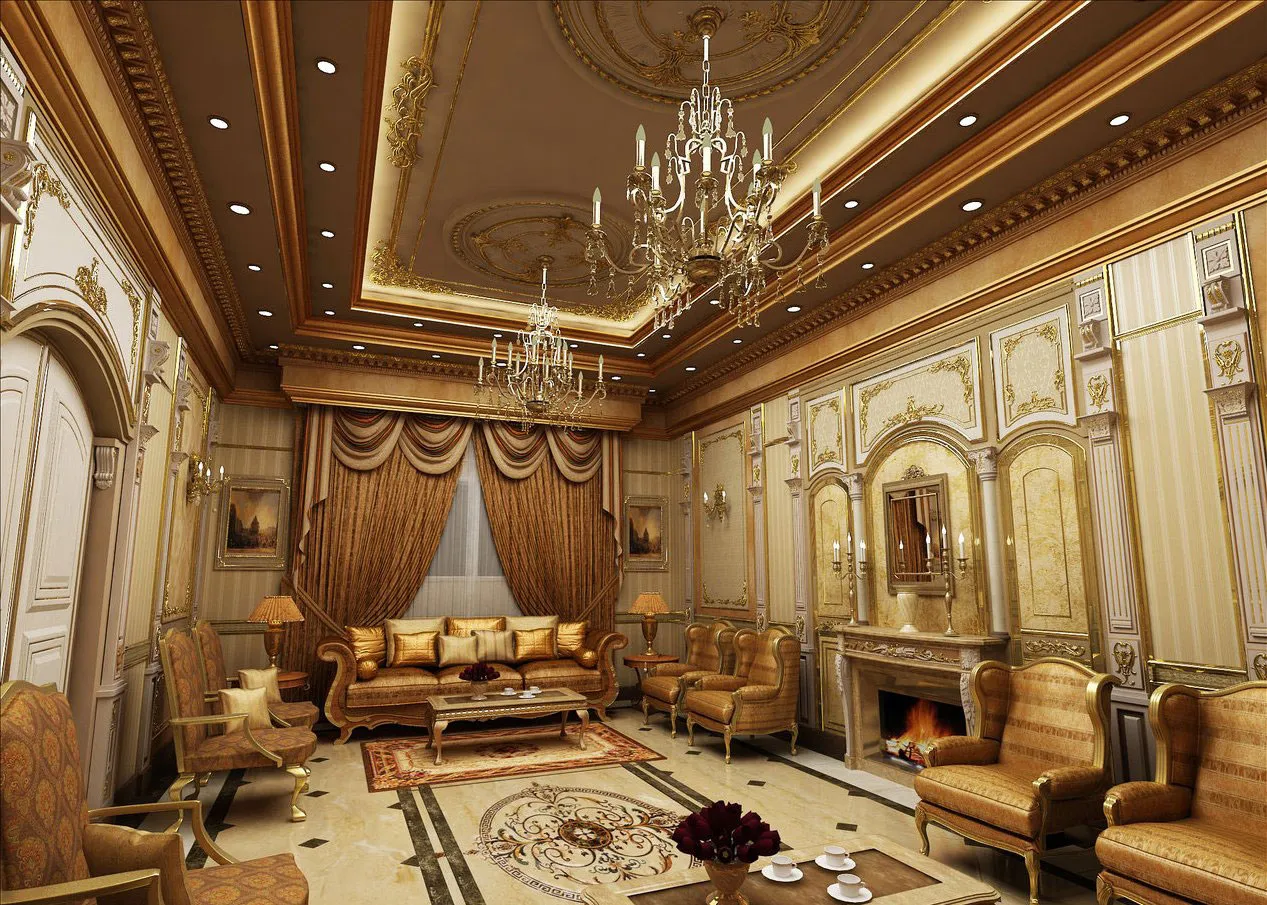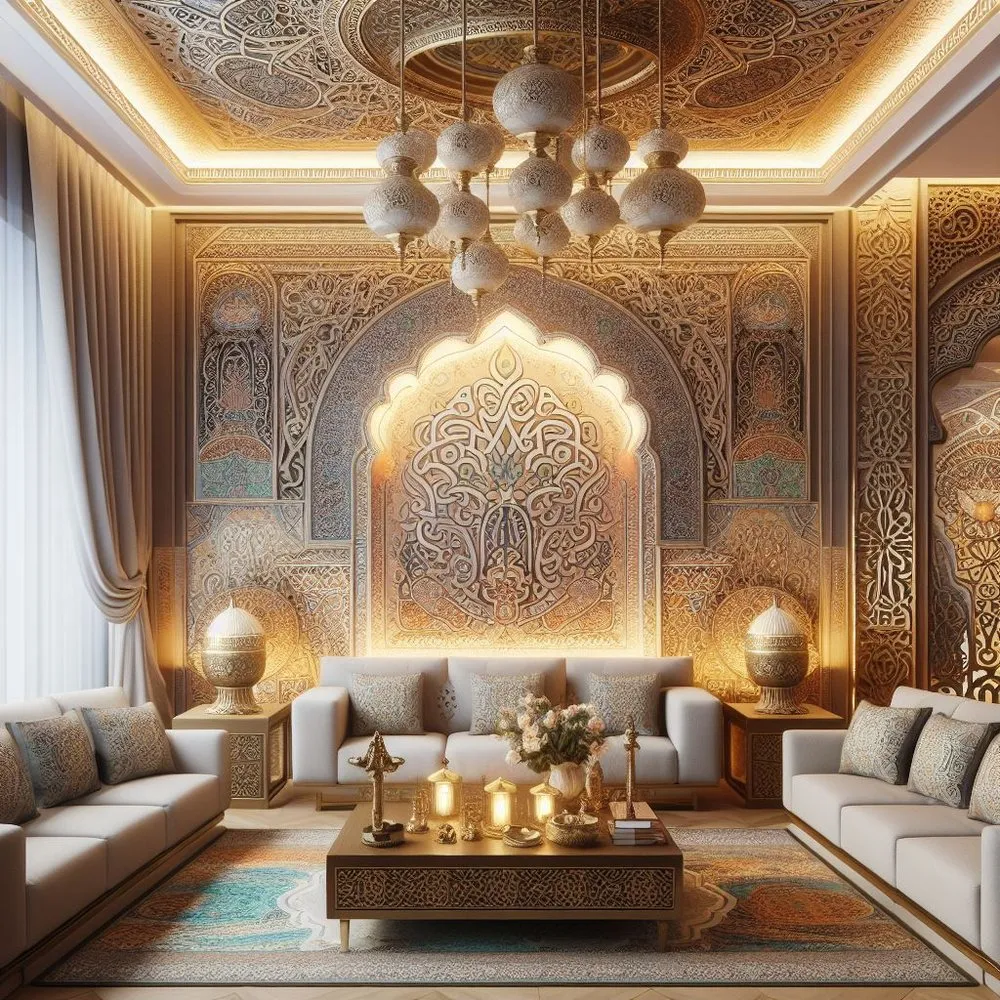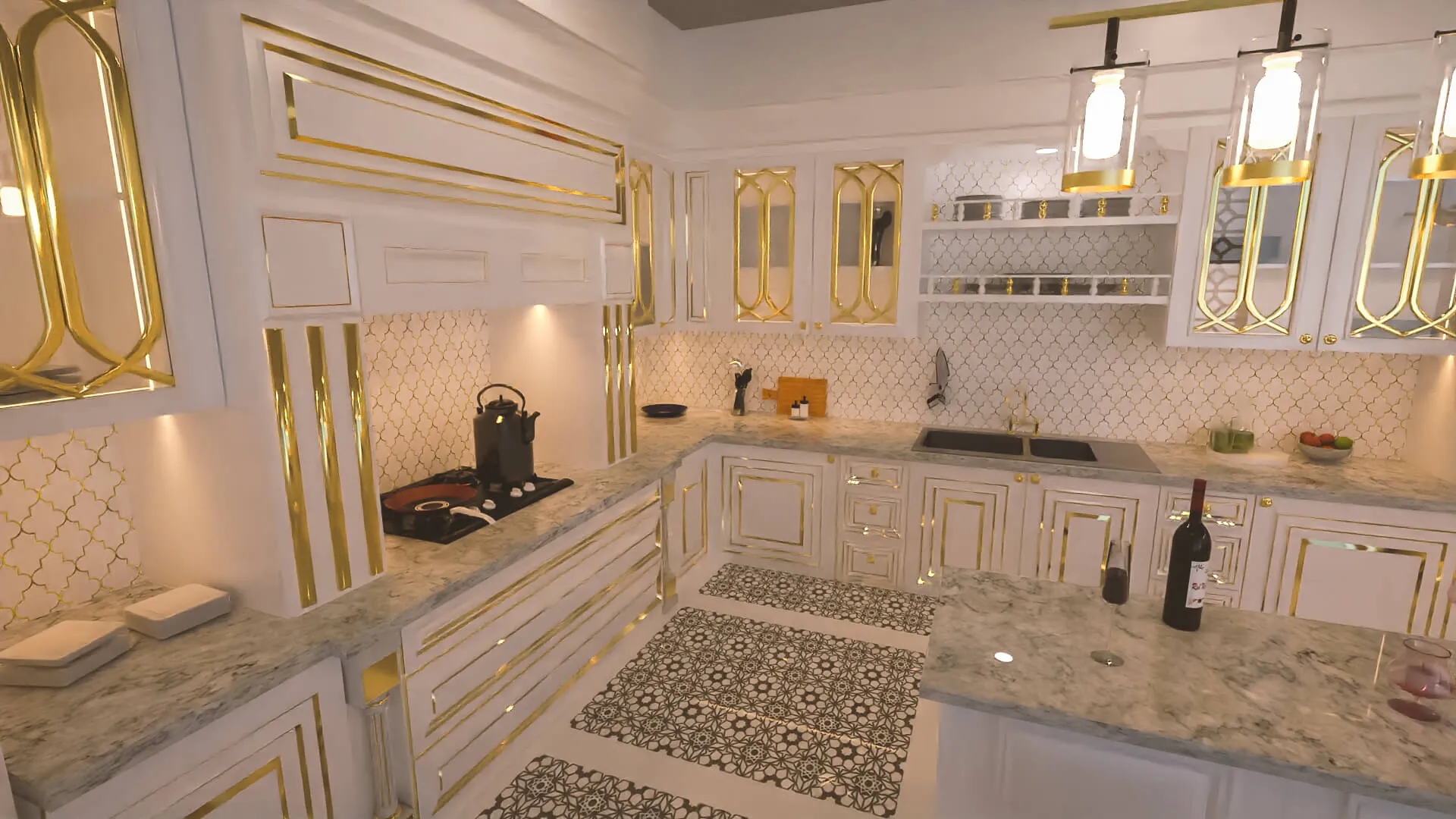What is Arabic Kitchen Decor
Arabic kitchen decor is a captivating fusion of cultural richness and functional design, drawing inspiration from the vibrant traditions of the Middle East and North Africa. It’s a style that celebrates intricate patterns, warm colors, and the beauty of natural materials, transforming the heart of your home into an inviting and aesthetically stunning space. This design philosophy emphasizes creating a warm, welcoming atmosphere that reflects the values of hospitality and family, central to Arabic culture. When considering Arabic kitchen decor, you’re not just decorating; you’re curating an experience, a story told through the textures, colors, and shapes of your space. It’s about bringing the essence of these ancient cultures into your modern life, providing a sense of history and serenity.
Key Elements of Arabic Design
Several key elements define Arabic design, influencing the look and feel of an Arabic kitchen. These include the extensive use of geometric patterns, often found in tilework, woodwork, and metalwork. Arched doorways and windows, a distinctive feature of Arabic architecture, add a sense of elegance and spaciousness. Warm and earthy color palettes, like terracotta, ochre, and deep blues, create a cozy atmosphere. The incorporation of natural light is also crucial, enhancing the beauty of the space. The use of intricate detailing, such as carved wood, ornate metal fixtures, and decorative hardware, further elevates the aesthetic. These elements are combined to create a harmonious and visually rich environment, reflecting the sophistication and artistry of Arabic cultures. Understanding these foundational aspects is key to successfully designing an Arabic-inspired kitchen.
Intricate Tilework

Tilework is a cornerstone of Arabic design, offering an opportunity to introduce intricate patterns and vibrant colors. Consider using Moroccan tiles with their complex geometric designs for your backsplash or as a decorative element on your countertops. These tiles not only add visual interest but also a tactile experience. The use of zellige tiles, known for their irregular shapes and unique colors, can create a stunning focal point. Alternatively, ceramic tiles with arabesque patterns, a popular choice, offer a more traditional look. The key is to choose tiles that reflect your personal style and the overall design scheme of your kitchen. When selecting tiles, consider the durability and ease of cleaning, especially for a high-traffic area like a kitchen. This emphasis on detail and craftsmanship is what makes Arabic tilework so distinctive and integral to the overall design.
Arched Doorways and Windows
Incorporating arched doorways and windows can dramatically transform the feel of your kitchen, lending an air of elegance and spaciousness. While completely renovating your kitchen to include architectural arches may be a major undertaking, there are simpler ways to achieve this effect. Consider adding arched mirrors or decorative panels above your countertops or cabinets to mimic the look. You can also integrate arched frames around existing doorways or windows. If renovating, think about how arched features can enhance the natural flow of light and create a sense of continuity with the rest of your home. When using arches, the materials used should be carefully chosen to complement the overall design. Wood, plaster, or even metal can be used to create these beautiful features, offering both aesthetic appeal and functionality. The use of arches can instantly add a touch of Arabian Nights charm.
Warm Color Palettes and Textures
Arabic design embraces a warm and inviting color palette, often drawing inspiration from the natural landscapes of the Middle East. Earthy tones such as terracotta, ochre, and sand are excellent choices for walls, cabinets, and flooring. Accents of deep blues, greens, and rich golds can be introduced through textiles, decorative items, and lighting. Textures play a vital role in enhancing the sensory experience of the space. Rough-hewn wood, textured plaster, and woven fabrics add depth and visual interest. Incorporate these textures through cabinet finishes, countertops, and soft furnishings. The strategic use of different materials can create a harmonious and visually rich environment. Avoid stark, cold colors. The objective is to create a sense of warmth and comfort, which is an important element of Arabic hospitality. This thoughtful blending of colors and textures creates a cohesive and welcoming kitchen.
Influence of Natural Light

Natural light is a key element in Arabic design, illuminating the beauty of the space and enhancing the overall ambiance. Maximizing the entry of natural light can make your kitchen feel more open and inviting. This can be achieved through large windows, skylights, or strategically placed mirrors that reflect light. Sheer curtains or blinds can filter the light, creating soft, diffused illumination. Consider the placement of your kitchen in relation to sunlight throughout the day. The use of light colors on walls and surfaces can also help reflect and amplify natural light. Proper lighting makes the intricate details of the decor more visible. The goal is to create a bright, airy space that feels connected to the outdoors, blending the interior and exterior seamlessly. The play of natural light brings the warmth of the sun into the heart of your home.
Incorporating Arabic Kitchen Decor
Integrating Arabic decor into your kitchen involves making thoughtful choices that reflect the essence of the style. The key is to find a balance that suits your lifestyle and preferences. Begin by considering the existing layout of your kitchen and the amount of space you have to work with. Decide on the main design elements you want to incorporate, such as tilework, color palettes, or traditional lighting. Start with small changes, such as adding decorative accents or textiles, to get a feel for the style before committing to larger renovations. Remember that authenticity is less about replicating exact elements and more about capturing the spirit of Arabic design. This can be achieved by carefully selecting pieces that resonate with your personal taste. Consider blending modern functionality with traditional aesthetics to ensure your kitchen is both beautiful and practical. This is a journey, not a race, so enjoy the process of transforming your kitchen into a stunning Arabic-inspired space.
Choosing the Right Color Palette
Selecting the right color palette is crucial for establishing the desired ambiance in your Arabic kitchen. Start with a base of warm, earthy tones like terracotta, beige, and ochre for walls and cabinets. These colors provide a grounding effect, evoking a sense of comfort and warmth. Incorporate accent colors inspired by the region, such as deep blues, emerald greens, and rich golds. These colors can be added through decorative tiles, textiles, and accent pieces. Consider how these colors interact with natural light. A well-lit kitchen allows the hues to appear vibrant and lively, while softer lighting can create a more intimate atmosphere. When choosing your palette, consider the existing colors in your home and how they will flow into your kitchen. The aim is to create a cohesive design that is both visually appealing and reflective of the Arabic style. Test color samples in your kitchen to see how they appear under different lighting conditions before making a final decision.
Selecting Authentic Tiles and Patterns

Authentic tiles and patterns are central to Arabic kitchen decor. The selection of tiles can dramatically transform the look and feel of your kitchen, providing a focal point that adds visual interest. Consider tiles with geometric designs, intricate floral patterns, or traditional arabesque motifs. When selecting tiles, focus on quality, durability, and style. Handmade tiles are an excellent option, offering unique character and craftsmanship. Look for tiles made from natural materials such as ceramic or terracotta. For a more contemporary look, consider using tiles as a backsplash. Be mindful of the size and scale of the tiles. Ensure that the patterns complement the overall design. The correct choice of tiles will create a visual feast that honors the traditions of Arabic art and design. The best tiles will not only decorate your kitchen but also tell a story of craftsmanship and cultural heritage.
Adding Traditional Lighting
Lighting plays a vital role in enhancing the ambiance of an Arabic kitchen, creating warmth and highlighting the decorative elements. Choose fixtures with intricate designs, such as pendant lights with filigree metalwork, lanterns, or mosaic lamps. The warm glow of the light creates a cozy, inviting atmosphere. Consider layering your lighting to achieve a balanced effect. Incorporate a combination of ambient, task, and accent lighting. Ambient lighting provides general illumination, while task lighting focuses on areas like the countertop or the cooking range. Accent lighting can be used to highlight decorative elements, such as tilework or artwork. Think about incorporating dimmers, which allow you to adjust the light intensity to create the desired atmosphere. The right lighting can turn your kitchen into a stunning and inviting space that reflects the beauty of Arabic design. The right lighting is not just a necessity, but an integral part of the decor.
Integrating Decorative Hardware
Decorative hardware adds a layer of elegance and detail, transforming the appearance of your kitchen. Choose handles, knobs, and pulls made from materials like brass, copper, or wrought iron. These materials are common in Arabic design, adding a touch of authenticity. Opt for intricately designed hardware with geometric patterns or ornate carvings to reflect the artistic traditions. Consider the finish of the hardware. Antique brass or brushed copper can create a warm, inviting look, while polished finishes can give a more contemporary feel. The scale and style of the hardware should complement your cabinets and the overall design scheme of the kitchen. Hardware can make your kitchen look both beautiful and highly functional. The addition of decorative hardware is a simple, yet effective way to elevate the aesthetics of your Arabic kitchen.
Furnishing Your Arabic Kitchen

The furniture you choose plays a critical role in creating an authentic Arabic kitchen. The selection of kitchen cabinets, countertops, and appliances influences the aesthetic and functionality of the space. The goal is to create a blend of functionality, comfort, and style, while maintaining an appreciation for the Arabic design aesthetic. Consider incorporating elements that add warmth and character, making your kitchen not just a space to cook, but a gathering place for friends and family. The right furnishings add a layer of sophistication that complements the design, bringing it all together harmoniously.
Selecting Kitchen Cabinets
Kitchen cabinets set the foundation for your kitchen. Choose cabinets with traditional Arabic design elements. Consider solid wood cabinets with intricate carvings, arched doors, or detailed paneling. Dark wood stains can create a rich, sophisticated look, while lighter wood tones can offer a more airy, modern appeal. The choice of cabinet style and finish is a crucial part of establishing the overall aesthetic. When selecting cabinets, consider the functionality and storage space you need. Ensure that the cabinets are well-organized and easy to access. Integrate open shelving to display decorative items. Remember to incorporate traditional hardware, such as ornate knobs and pulls, to enhance the cabinets’ visual appeal. Cabinets serve as the backdrop for your kitchen decor. They need to be beautiful, functional, and consistent with the Arabic style you are aiming for.
Choosing Countertops
The choice of countertops has a major effect on the visual appeal and practicality of your Arabic kitchen. Choose countertops made from natural stone, such as granite or marble, for an authentic feel. These materials offer both beauty and durability, essential for a functional kitchen. Alternatively, consider using concrete countertops, which can be customized with various colors and textures, offering a more modern twist. The countertop material should harmonize with the cabinets, backsplashes, and overall decor scheme. Ensure the countertops are properly sealed and maintained to withstand the wear and tear of everyday use. If you are looking for an Arabic touch, consider adding tile inlays to the countertops. The right countertops will enhance the elegance of the kitchen, providing an attractive and functional workspace.
Selecting Kitchen Appliances

While choosing kitchen appliances, the emphasis should be on blending functionality with aesthetics. The appliances should harmonize with the overall Arabic design. For a cohesive look, consider integrating your appliances into the design. Stainless steel appliances can be a sleek and modern choice that complements many design styles. For a more traditional look, consider using panel-ready appliances that can be seamlessly integrated with the cabinetry. Consider how the appliances will be placed to maintain the flow of the kitchen space. Make sure the appliances are energy efficient and reliable. The appliances are crucial elements of a functional kitchen. Select appliances that are both practical and aesthetically pleasing to complement your Arabic kitchen.
Creating the Perfect Ambiance
Creating the perfect ambiance in your Arabic kitchen is about fostering a warm, inviting atmosphere. The careful selection of textures, colors, and lighting is crucial for enhancing the overall mood. The integration of textiles, decorative accents, and the combination of modern and traditional elements can contribute to a cohesive and captivating design. The goal is to create a space that feels both luxurious and comfortable, a place where you and your guests will feel relaxed and welcome. The ambiance will be the distinguishing feature. The right ambiance will truly transform your kitchen.
Decorating with Textiles
Textiles add warmth, texture, and color to your kitchen. Incorporate these elements through fabrics like cushions, curtains, and table linens. Choose fabrics with traditional Arabic patterns, such as geometric designs, paisley motifs, or intricate floral patterns. Materials like silk, linen, and cotton will complement the existing design. Select colors and textures that enhance the overall color scheme. Consider adding decorative cushions on kitchen seating or placing a patterned runner on your table or counter. The right textiles add comfort and warmth to your kitchen, contributing to the overall inviting ambiance. Textiles are essential to creating a space that reflects the spirit of Arabic hospitality.
Adding Decorative Accents

Decorative accents are important for adding character and personality to your Arabic kitchen. Incorporate items such as handcrafted pottery, metalwork, and mosaic pieces to infuse the space with traditional charm. Display these decorative accents on open shelving, countertops, or as wall art. Consider adding ornate mirrors, candle holders, or decorative trays to enhance the aesthetic. The accessories chosen should enhance the style. Incorporate items that have meaning and resonate with your personal style. These accents will create a sense of individuality and charm. The key is to strike a balance. The right decorative accents create a cohesive design that reflects your appreciation for Arabic design.
Combining Modern and Traditional
Combining modern elements with traditional Arabic decor is an excellent way to create a kitchen that is both stylish and functional. Integrate sleek, modern appliances with traditional cabinetry. You can balance the look by mixing contemporary lighting fixtures with intricate tilework or traditional mosaic backsplashes. For example, you might use a modern, minimalist kitchen island and decorate the space with Arabic-inspired decorative items. This combination results in a space that caters to modern living needs while still embracing the rich traditions of Arabic design. The success of this style depends on maintaining a balance between the two design philosophies, while making sure the space does not appear disjointed. This fusion of styles will make your kitchen unique. It is both fashionable and a practical space that reflects your personal aesthetic.
Budgeting for Your Arabic Kitchen
Planning a budget is essential to making your Arabic kitchen design a reality. Determine your budget before starting. Prioritize your spending on essential elements. Allocate a portion of the budget for cabinets, countertops, and appliances. Be realistic about what you can afford. Research the costs of materials, labor, and decor to estimate your overall expenses. To stay within budget, consider DIY projects. You can save money by installing tilework. Shop around for the best deals on materials and supplies. There are many affordable options available. Prioritize the elements that will have the biggest impact on the design, such as tilework or lighting. By carefully managing your budget and prioritizing your spending, you can create a stunning Arabic kitchen without exceeding your financial limits. Managing the budget is crucial to a successful project.
Where to Find Decor and Supplies
Finding the right decor and supplies is essential to creating an authentic Arabic kitchen. Explore local and online stores. Search for stores that specialize in Middle Eastern or North African decor. Visit antique shops. There, you can find unique and vintage items. Browse online marketplaces, such as Etsy or eBay. These platforms offer a wide range of handmade and vintage items. Participate in local cultural events. You may find artisans selling traditional crafts and decor. Research reputable suppliers. Consider importing tiles or decorative items from countries known for their Arabic design. Be patient and enjoy the search process. You can gather unique pieces that reflect your personal style. The right sources will help you find items that add authenticity to your kitchen. This will make the process exciting and fulfilling.
DIY Projects for Arabic Decor
DIY projects are a great way to add personal touches and save money. Consider painting existing cabinets. You can change the color. You can add decorative accents to create the desired look. Create your own mosaic backsplash. This can be an affordable way to add a unique touch. Build open shelving and add traditional patterns. You can also add decorative shelves to display your items. DIY projects bring satisfaction and can offer an outlet for your creativity. By taking on DIY projects, you can add your personal touch. You will also enhance the overall charm of your Arabic kitchen. The DIY projects are a fun way to personalize your space.
Maintaining Your Arabic Kitchen
Maintaining your Arabic kitchen ensures that it remains beautiful and functional for years. Proper cleaning is essential to preserve the beauty of the space. Clean the surfaces regularly, and use appropriate cleaning products. Regularly maintain the appliances. Ensure they are running efficiently. Inspect the tilework. Replace damaged or missing tiles. Ensure proper ventilation. It is important to maintain the quality of your kitchen. Proper care and maintenance will make your kitchen last for years. Regular maintenance will help prevent significant repairs. The right maintenance is essential to preserving the look and functionality.
In conclusion, designing an Arabic kitchen is a rewarding journey of merging cultural traditions with personal style. By understanding the key elements of Arabic design, from intricate tilework to warm color palettes, you can create a kitchen that reflects your appreciation for the beauty and history of this rich design aesthetic. From selecting the right color palettes and authentic tiles to integrating traditional lighting and decorative hardware, each decision contributes to the creation of a unique and inviting space. Remember to balance the traditional elements with modern functionality, ensuring that your kitchen remains a practical and enjoyable space for years to come. Enjoy the process of creating your dream Arabic kitchen, a space that celebrates beauty, history, and the art of living.
